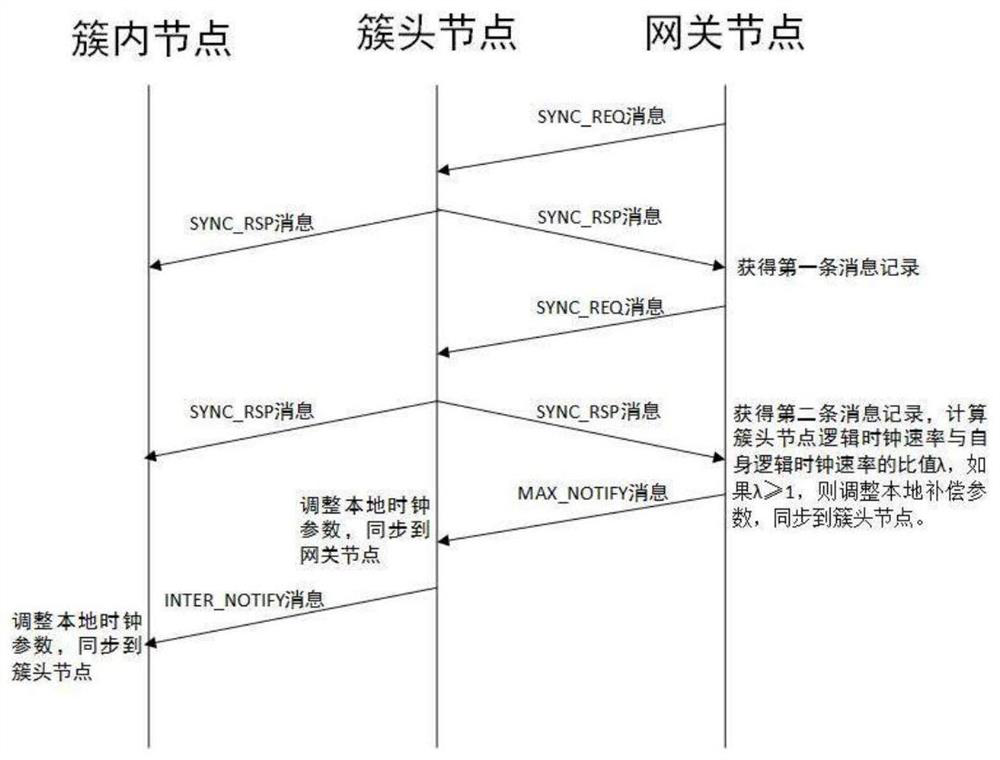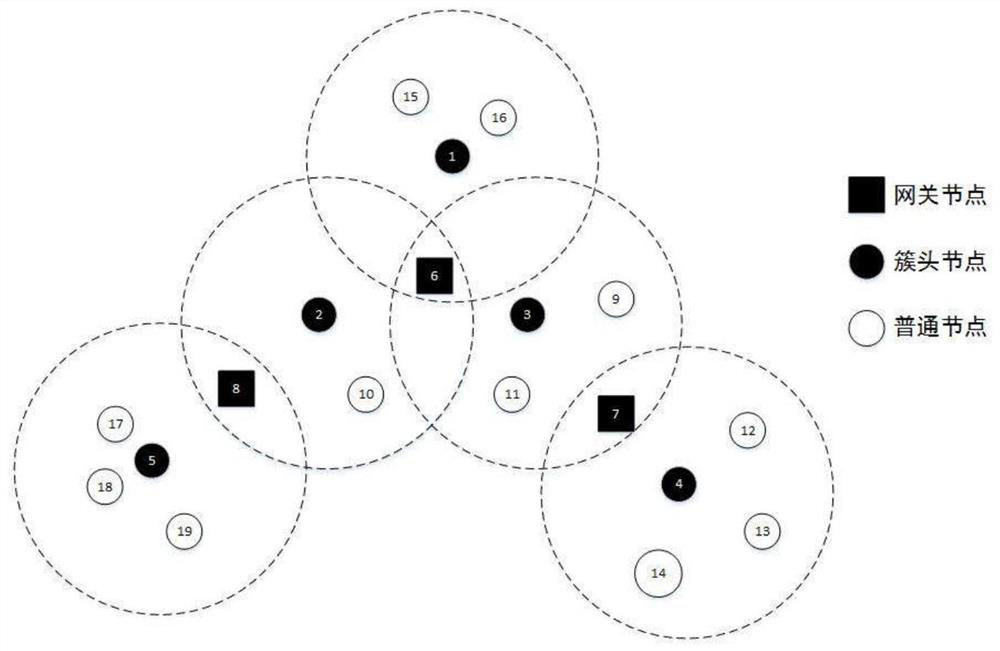A Consistent Distributed Time Synchronization Method for Wireless Sensor Networks
A wireless sensor and time synchronization technology, which is applied in the field of wireless sensor networks, can solve the problem that the clustering hierarchy is not fully utilized, and achieve the effects of shortening the convergence time, reducing energy consumption, and increasing the propagation rate
- Summary
- Abstract
- Description
- Claims
- Application Information
AI Technical Summary
Problems solved by technology
Method used
Image
Examples
Embodiment 1
[0027] Node's hardware clock model:
[0028] τ i (t) = α i t+β i (1)
[0029] where τ i (t) is the reading of the hardware clock of node i at absolute time t, α i and beta i are the hardware clock rate and clock offset of node i, respectively. Although alpha i and beta i It cannot be calculated from time t, but node i can be compared with another node j's local clock to obtain the clock relationship between them:
[0030]
[0031] Logical clock model:
[0032] The hardware clock of node i can be converted into a logical clock value L i (t), and the logical clock is linearly related to the hardware clock:
[0033]
[0034] in and are the relative clock rate and relative clock skew of the logical clock and the hardware clock, respectively.
PUM
 Login to View More
Login to View More Abstract
Description
Claims
Application Information
 Login to View More
Login to View More - R&D
- Intellectual Property
- Life Sciences
- Materials
- Tech Scout
- Unparalleled Data Quality
- Higher Quality Content
- 60% Fewer Hallucinations
Browse by: Latest US Patents, China's latest patents, Technical Efficacy Thesaurus, Application Domain, Technology Topic, Popular Technical Reports.
© 2025 PatSnap. All rights reserved.Legal|Privacy policy|Modern Slavery Act Transparency Statement|Sitemap|About US| Contact US: help@patsnap.com



